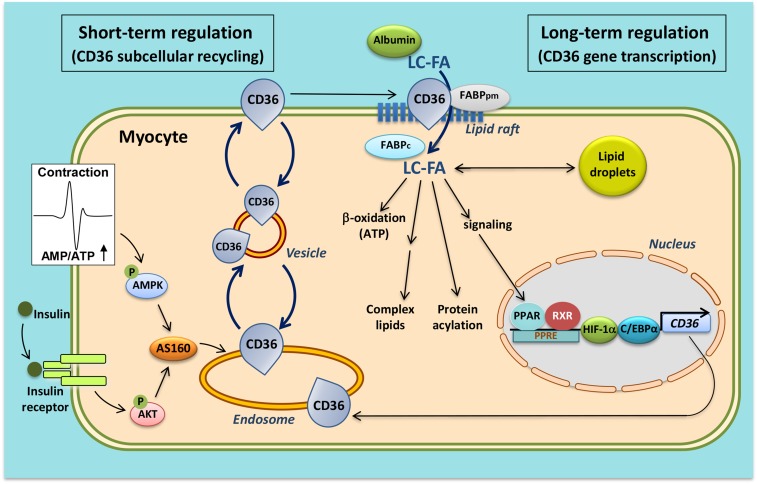Fig. 2.
Schematic presentation of both the facilitatory and regulatory roles of CD36/SR-B2 in (long-chain) fatty acid uptake into cardiac and skeletal myocytes. At sarcolemmal lipid rafts, CD36, most likely in interaction with the peripheral membrane protein, FABPpm, and, at the intracellular site, with FABPc, facilitates the entry of fatty acids into the cell (middle part of figure). Short-term regulation (i.e., minutes) of the rate of cellular fatty acid uptake occurs by reversible intracellular recycling (vesicular transport) of CD36 from an endosomal storage compartment to the sarcolemma, which is triggered by either changes in the frequency of muscle contraction or by plasma insulin. These latter triggers are mediated by the AMP-activated kinase (AMPK) and insulin signaling cascades, respectively, whose signals converge at AS160 (left part of figure). Long-term regulation of cellular fatty acid uptake occurs via changes in CD36 gene transcription, mediated, among others, by fatty acid-induced PPAR activation, HIF-1, and C/EBPα (right part of figure). See text for further explanation. RXR, retinoid X receptor.

